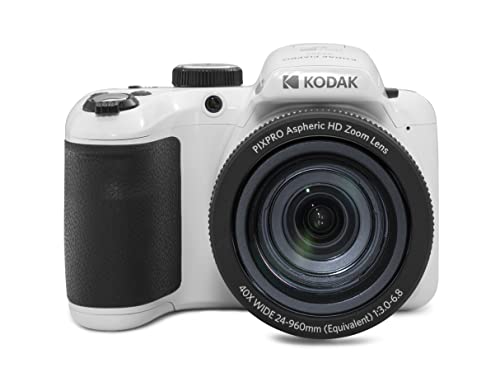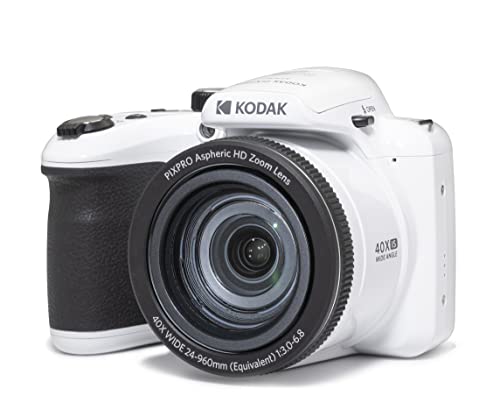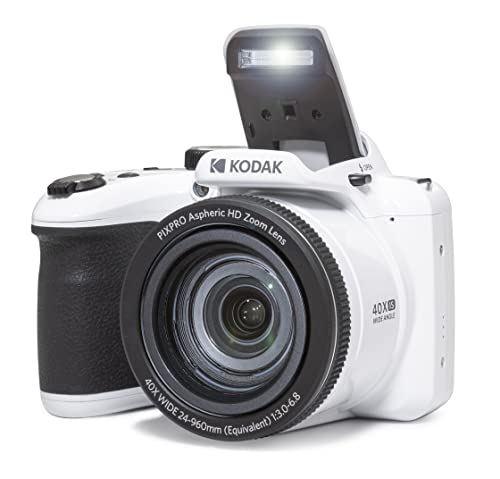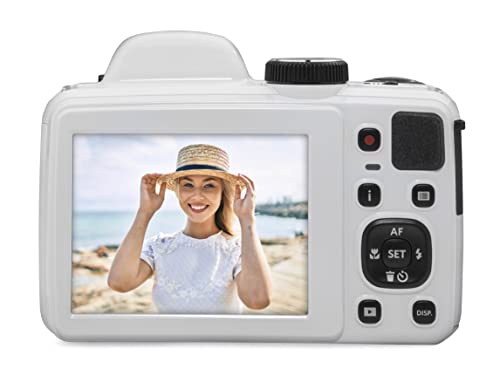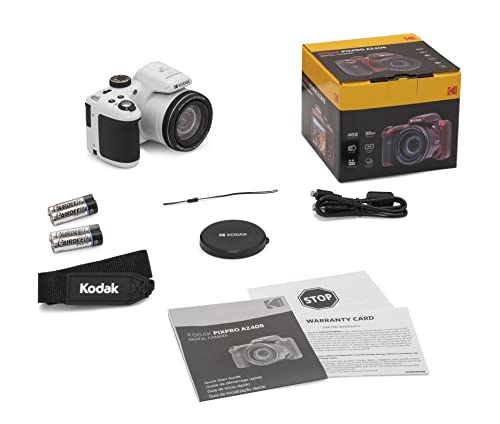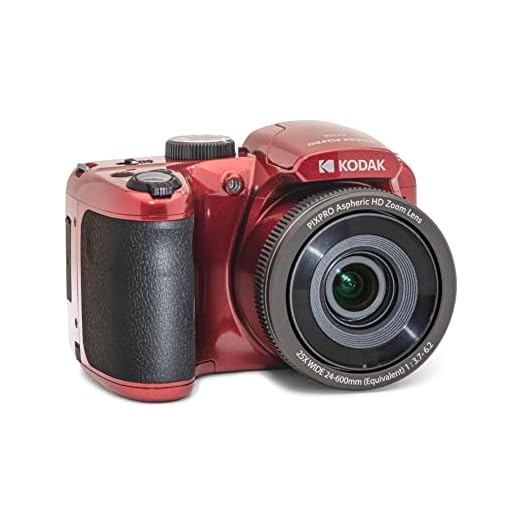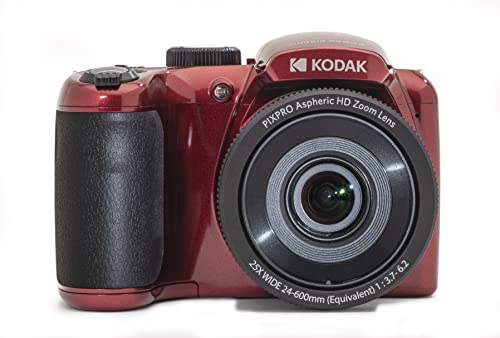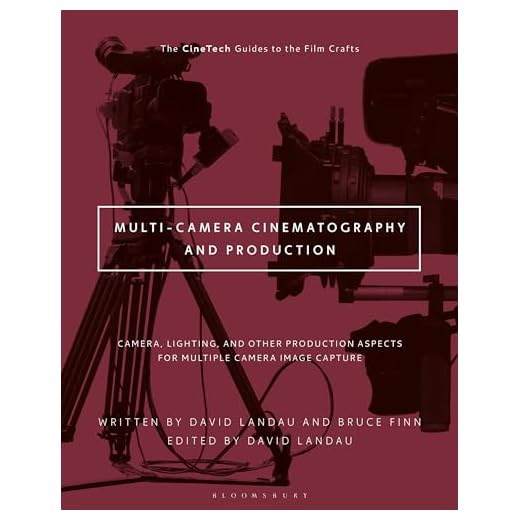
When it comes to capturing the beautiful moments and breathtaking views during your travels, a high-quality camera is a must-have. While many people rely on their smartphones, such as the iPhone, for taking photos, there are several reasons why investing in a dedicated camera is a better option.
Firstly, the image quality of a camera far surpasses that of a smartphone. With a camera, you can capture incredibly detailed images with higher resolution, better color accuracy, and improved dynamic range. This means that your travel photos will turn out much more vivid and lifelike, allowing you to preserve the memories in the best possible way.
Secondly, a dedicated camera offers greater control over the settings and features. Unlike a smartphone where you are limited to the built-in camera app, a camera allows you to adjust settings such as aperture, shutter speed, ISO, and white balance. This level of control enables you to experiment with different techniques and capture creative shots that truly reflect the atmosphere and mood of your travels.
Lastly, a camera provides a more ergonomic and user-friendly experience. With its larger size and dedicated buttons and dials, operating a camera is much easier and intuitive compared to tapping and swiping on a touchscreen. This is especially important when you’re in a hurry to capture a fleeting moment or when you’re exploring rugged terrains where a smartphone may be more susceptible to damage.
Overall, if you’re serious about photography and want to capture the essence of your travels in the best possible way, investing in a dedicated camera is undoubtedly a smart choice. Whether you opt for a compact mirrorless camera or a DSLR, the improved image quality, greater control, and user-friendly experience will make your travel photos truly unforgettable.
The Importance of Choosing the Best Camera for Traveling
As an avid traveler, I understand the importance of capturing the beautiful moments and experiences that I encounter on my journeys. While my smartphone may offer a convenient option for taking photos, it often falls short in terms of quality and versatility. That’s why I firmly believe in the importance of choosing the best camera for traveling.
One of the main reasons why it’s crucial to invest in a dedicated camera for travel is the superior image quality it can provide. Unlike smartphones, which are primarily designed for communication and multimedia purposes, a good camera is specifically engineered to capture stunning photographs with sharpness, clarity, and vibrant colors. These high-quality images not only allow me to relive my travel memories but also serve as valuable mementos that I can proudly share with others.
Another key factor to consider when selecting a travel camera is its versatility. While smartphones may offer a wide range of features, they often lack the flexibility and control that dedicated cameras provide. Whether it’s capturing breathtaking landscapes, zooming in on wildlife, or experimenting with creative settings, a good camera allows me to unleash my creativity and capture the essence of each destination in a unique way.
Moreover, a dedicated travel camera is designed with durability and portability in mind. From rugged outdoor adventures to crowded city streets, I need a camera that can withstand different environments and conditions. Additionally, size and weight are crucial considerations when traveling, as I want a camera that is compact enough to fit in my bag without adding unnecessary bulk.
In conclusion, choosing the best camera for traveling is of utmost importance to me. By investing in a dedicated camera, I can capture high-quality images, have more creative control, and ensure durability and portability throughout my journeys. Whether I’m exploring a new city or immersing myself in nature, having a reliable camera by my side allows me to document and cherish the incredible moments and sights that I encounter along the way.
Why using a dedicated camera is better than relying on your iPhone
As someone who loves to travel and capture moments, I have always found using a dedicated camera to be a better choice over relying solely on my iPhone. Here are a few reasons why:
1. Quality and Detail
While iPhones have improved significantly in terms of camera quality, dedicated cameras still offer better overall image quality and detail. The larger sensors, better lenses, and advanced features like manual controls allow for more precise and enhanced image capturing. Whether it’s capturing landscapes, wildlife, or portraits of people, the dedicated camera ensures every detail is captured with better clarity and accuracy.
2. Versatility and Flexibility
Having a dedicated camera gives you more versatility and flexibility to explore different creative options. With a wide range of interchangeable lenses, zoom capabilities, and shooting modes, you can easily adapt to different shooting situations and achieve the desired results. Whether you want to capture a wide-angle shot of a breathtaking landscape or zoom in on a distant subject, a dedicated camera provides the tools to do so.
3. Longevity and Battery Life
Using your iPhone as the primary camera during travels can drain its battery quickly. On the other hand, dedicated cameras are designed to have a longer battery life, allowing you to click more photos and record videos without worrying about running out of power. Additionally, dedicated cameras are built to withstand various weather conditions and rough handling, making them more durable and reliable for long-term use.
4. Raw Capture and Post-Processing
One of the significant advantages of using a dedicated camera is the ability to capture images in RAW format. RAW files contain unprocessed data captured by the camera’s sensor, giving you more control and flexibility during post-processing. You can make adjustments to exposure, white balance, and other settings without sacrificing image quality. This allows for more creativity and experimentation, resulting in stunning photographs that truly reflect your vision.
While smartphones like the iPhone have undoubtedly become powerful tools for photography, a dedicated camera still offers distinct advantages in terms of image quality, versatility, longevity, and post-processing capabilities. So, if you’re passionate about photography and want to take your travel photography to the next level, investing in a dedicated camera is a worthwhile decision.
Factors to Consider When Choosing a Camera for Traveling
As an avid traveler, I understand the importance of capturing breathtaking moments and memories during my trips. While smartphones have become increasingly capable of taking high-quality photos, there are still several factors to consider when choosing a dedicated camera for traveling.
Image Quality: One of the key factors to consider when selecting a camera for traveling is image quality. Look for a camera with a high resolution, preferably above 16 megapixels, to ensure that your photos will be sharp and detailed.
- Resolution: Consider cameras with higher megapixel counts for better image quality and the ability to print larger photos without losing detail.
- Image Sensor: Look for cameras with larger image sensors, as they have better low-light performance and dynamic range.
- Image Stabilization: Consider cameras with built-in image stabilization to minimize blur caused by shaky hands or at longer zoom ranges.
Portability: Traveling often involves a lot of walking and exploring, so having a camera that is lightweight and portable is essential. Look for compact cameras that can easily fit into your bag or even your pocket without weighing you down.
- Size and Weight: Consider cameras that strike a balance between being lightweight and durable, making them easy to carry around all day.
- Lens Options: Look for cameras with versatile zoom lenses, allowing you to capture both wide-angle landscapes and detailed shots from a distance.
- Weather Resistance: Consider cameras that are weather-sealed or have additional protection against dust and moisture, especially if you plan on traveling to extreme environments.
Connectivity: In today’s digital age, having the ability to easily transfer and share your photos is crucial. Look for cameras with built-in Wi-Fi or Bluetooth capabilities to quickly and wirelessly transfer your images to your smartphone or other devices.
- Wireless Connectivity: Consider cameras that allow you to connect to your smartphone via an app, making it convenient for sharing on social media or backing up your photos on the go.
- Compatibility: Ensure that your camera is compatible with the editing software or apps you prefer to use to enhance and edit your photos.
By considering factors such as image quality, portability, and connectivity, you can find the perfect camera for your travel adventures, allowing you to capture stunning photos and create lasting memories.
Understanding the key features for capturing stunning travel photos
As an avid traveler, I have come to appreciate the power of capturing the essence of a place through photography. The right camera can truly elevate your travel experience, allowing you to create stunning images that capture the beauty and adventure of your journey. When choosing a camera for travel, there are several key features that I believe are essential for capturing those unforgettable moments.
Image quality: One of the most important features to consider when selecting a camera for travel is its image quality. Look for a camera with a high resolution and a large image sensor, as these factors will greatly impact the level of detail and clarity in your photos. A camera that can produce sharp and vibrant images will allow you to capture the beauty of landscapes, architecture, and the people you encounter along your travels.
Another important feature to consider is portability. When you’re traveling, you want a camera that is lightweight and easy to carry, so you can take it with you wherever you go. Look for a camera that is compact and has a durable build. You don’t want to be weighed down by a bulky camera, especially when you’re exploring new places and want to be as mobile as possible.
Versatility is also a key factor to consider when choosing a camera for travel. Look for a camera that offers a variety of shooting modes and settings, so you can adapt to different lighting conditions and subjects. This will allow you to capture a wide range of images, from landscapes to portraits, and ensure that you can make the most of every situation you encounter.
In conclusion, when choosing a camera for travel, it’s essential to consider the image quality, portability, and versatility. By selecting a camera that excels in these areas, you can be confident that you’ll be able to capture stunning travel photos that truly capture the essence of your journey.
Top Picks for Travel Cameras
When it comes to capturing the best memories while traveling, having a reliable camera is an absolute must. As someone who loves to explore new places and document my adventures, I have tested out various cameras and have narrowed down my top picks for travel cameras.
1. DSLR Camera
A DSLR camera is a popular choice among professional photographers and travel enthusiasts alike. With its ability to capture high-quality images, interchangeable lenses, and manual controls, a DSLR camera offers great versatility for capturing different types of shots. Whether you’re shooting landscapes, portraits, or action scenes, a DSLR camera will deliver excellent results.
2. Mirrorless Camera
For those who prefer a more compact and lightweight option, a mirrorless camera is a great choice. With its smaller size, it is easier to carry around while traveling without compromising on image quality. Many mirrorless cameras also come with advanced features such as electronic viewfinders and in-camera image stabilization, making them a popular choice for travel photographers.
3. Action Camera
If you are looking to capture adventurous activities and extreme sports during your travels, an action camera is a must-have. These cameras are designed to withstand tough conditions and can be mounted on helmets, bikes, or even underwater housings. With their wide-angle lenses and ability to shoot high-definition videos, action cameras are perfect for capturing thrilling moments while on the go.
When choosing a travel camera, it’s important to consider your specific needs and preferences. Whether you prefer the versatility of a DSLR, the compactness of a mirrorless camera, or the ruggedness of an action camera, these top picks will ensure you capture stunning photos and videos during your travels.
Exploring the Best Cameras for Travelers on the Market
As an avid traveler, I understand the importance of capturing the beauty and essence of the places I visit. While my smartphone camera has served me well in the past, I have been considering investing in a dedicated camera for my future adventures. With so many options on the market, it can be overwhelming to choose the best camera for traveling. That’s why I’ve done some research and have narrowed down a few top contenders that could enhance my photography experience.
One camera that caught my attention is the Sony A7 III. This mirrorless camera is highly regarded for its outstanding image quality and impressive low-light performance. It features a full-frame sensor, which allows for detailed photos with rich colors and excellent dynamic range. The Sony A7 III also offers fast autofocus and a wide ISO range, making it ideal for capturing fast-moving subjects and shooting in various lighting conditions. Additionally, its compact size and lightweight body make it perfect for travel, ensuring that I won’t be burdened by bulky equipment.
Another impressive option is the Fujifilm X-T4.
Equipped with a powerful APS-C sensor, this mirrorless camera delivers stunning image quality and superb image stabilization. The Fujifilm X-T4 boasts a fast burst mode, enabling me to capture action-packed moments during my travels. Its intuitive controls and customizable settings make it user-friendly, while its rugged build guarantees durability, perfect for adventurous journeys. Furthermore, this camera has a vast selection of high-quality lenses available, allowing for versatility in capturing different subjects and scenes.
In conclusion, both the Sony A7 III and the Fujifilm X-T4 offer outstanding features that would enhance my photography experience while traveling. Their impressive image quality, advanced technology, and compact sizes make them excellent choices for capturing the beauty of the world. Ultimately, the decision will come down to personal preferences and specific needs, but I am excited to explore the possibilities that these cameras offer.
Mirrorless Cameras: The Perfect Companion for Travelers
As an avid traveler, I always strive to capture the beauty of the places I visit through the lens of my camera. Up until recently, my go-to device was my iPhone, which offered convenience and a decent image quality. However, after extensive research, I have come to realize that mirrorless cameras are the perfect companion for travelers like me.
One of the main advantages of mirrorless cameras is their compact size and lightweight design. Unlike bulky DSLR cameras, mirrorless cameras can easily fit into a small bag or even a pocket, allowing me to carry them effortlessly during my travels. This means I can capture incredible photos without feeling weighed down by heavy photography equipment.
One of the key features that sets mirrorless cameras apart from their rivals is their image quality. With larger sensors and interchangeable lenses, mirrorless cameras produce stunning photos that rival those of professional DSLR cameras. Whether I’m capturing vibrant landscapes or candid portraits, I can trust my mirrorless camera to deliver sharp and detailed images.
Furthermore, mirrorless cameras offer a wide range of creative options, allowing me to experiment and push the boundaries of my photography skills. With features such as manual controls, customizable settings, and advanced autofocus systems, I have the flexibility to capture images exactly as I envision them. This versatility enables me to adapt to different shooting conditions and capture unique perspectives of the places I visit.
In conclusion, mirrorless cameras have become an indispensable tool for travelers who want to capture their experiences with stunning image quality and creative freedom. Their compact size, impressive image quality, and versatility make them the perfect companion for any travel enthusiast. So, if you’re planning your next adventure, consider investing in a mirrorless camera to take your photography to the next level.
Discover the Advantages of Mirrorless Cameras for Your Travel Photography Needs
As a passionate traveler and photography enthusiast, I have always relied on my trusty iPhone to capture the beautiful moments and stunning landscapes during my journeys. However, as I started exploring the world more extensively, I realized that my iPhone’s camera had its limitations. That’s when I decided to invest in a mirrorless camera, and it completely transformed my travel photography experience.
Unmatched Image Quality: Mirrorless cameras are equipped with larger image sensors compared to smartphones, allowing them to capture more detail and deliver superior image quality. Whether you’re capturing sweeping landscapes or candid portraits, a mirrorless camera will ensure that every shot is filled with rich colors and sharpness, allowing you to bring your travel memories to life.
Lightweight and Compact: One of the greatest advantages of mirrorless cameras for travel photography is their size and weight. These cameras are significantly smaller and lighter than DSLRs, making them highly portable and ideal companions for travel. You can easily slip a mirrorless camera into your backpack or even carry it around your neck all day without feeling weighed down, allowing you to capture those spontaneous travel moments effortlessly.
Versatility and Interchangeable Lenses: Another advantage of mirrorless cameras is their ability to use interchangeable lenses, giving you the freedom to adapt to various shooting situations. Whether you’re photographing stunning landscapes, capturing close-up details, or shooting in low light conditions, a mirrorless camera offers a wide range of lenses that can be easily switched out to meet your specific needs.
Advanced Features and Controls: Mirrorless cameras are packed with advanced features and controls that allow you to have full creative control over your photographs. From manual exposure settings to customizable function buttons, you can fine-tune every aspect of your image and experiment with different shooting modes to capture the perfect shot. With a mirrorless camera in hand, you can explore your creativity and push the boundaries of your travel photography.
In conclusion, if you’re looking to take your travel photography to the next level, investing in a mirrorless camera is definitely worth considering. From unmatched image quality to portability and versatility, mirrorless cameras offer a range of advantages that will enhance your travel photography experience and help you capture breathtaking moments and memories from all around the world.
Compact vs. DSLR: Which Camera Is Right for You?
I recently found myself in the market for a new camera, as I wanted something more powerful than my iPhone for capturing my travel experiences. As I explored my options, I came across two main categories: compact cameras and DSLRs. Each had its own set of features and benefits, so I had to carefully consider which one would be the best fit for my needs.
Compact cameras are known for their portability and convenience. They are small and lightweight, making them easy to carry around during long days of exploring. Compact cameras also have built-in lenses, eliminating the need to carry additional lenses. They are perfect for those who prioritize ease of use and want a camera that can easily fit in their pocket or bag.
On the other hand, DSLRs offer more advanced features and greater control over the photography process. They have larger image sensors, which allow for better image quality, especially in low light situations. DSLRs also offer interchangeable lenses, giving photographers the flexibility to capture a wide range of subjects, from landscapes to portraits. However, DSLRs are bulkier and heavier compared to compact cameras, making them less convenient for travel.
In the end, I decided to go with a compact camera for my travel adventures. The portability and convenience of a compact camera outweighed the advanced features of a DSLR for my needs. I wanted something that I could easily take with me wherever I went, without feeling weighed down. Additionally, compact cameras nowadays offer impressive image quality and a variety of shooting modes, making it possible to capture stunning photos even without the manual controls of a DSLR.
Ultimately, the choice between a compact camera and a DSLR comes down to personal preferences and priorities. If you value portability and convenience, a compact camera may be the right choice for you. However, if you are looking for greater control and advanced features, a DSLR might be more suitable. Consider your needs and weigh the pros and cons of each type of camera before making your decision.
Comparing the pros and cons of compact and DSLR cameras for travel photography
When it comes to choosing a camera for your travel photography needs, two popular options are compact cameras and DSLR cameras. Each has its own set of advantages and disadvantages that you should consider before making a decision. Let’s take a closer look at the pros and cons of each.
Compact Cameras
Pros:
- Portability: Compact cameras are much smaller and lighter than DSLR cameras, making them easier to carry around during your travels.
- User-friendly: These cameras are designed with simplicity in mind, often featuring automatic shooting modes and built-in image processing.
- Versatility: Some compact cameras offer a wide range of shooting modes and advanced features, allowing you to capture different types of photos.
Cons:
- Image quality: While compact cameras have improved over the years, they still generally offer lower image quality compared to DSLR cameras, especially in low light situations.
- Limited manual control: Compact cameras may not have as many manual controls and settings as DSLR cameras, which can restrict your creativity in certain situations.
- Limited lens options: Most compact cameras come with fixed lenses, which means you won’t have the flexibility to switch lenses for different types of photography.
DSLR Cameras
Pros:
- Image quality: DSLR cameras are known for their superior image quality, thanks to their larger sensors and interchangeable lenses.
- Manual control: These cameras offer a wide range of manual controls and settings, giving you full creative control over your photos.
- Interchangeable lenses: With DSLR cameras, you can swap out lenses to suit different types of photography, whether it’s wide-angle landscapes or telephoto wildlife shots.
Cons:
- Size and weight: DSLR cameras are bulkier and heavier than compact cameras, which can be a burden when traveling.
- Learning curve: DSLR cameras have more complex controls and menus, so it may take some time to learn how to use them effectively.
- Price: DSLR cameras tend to be more expensive than compact cameras, especially when you factor in the cost of lenses and other accessories.
In conclusion, compact cameras are a great choice for travelers who prioritize portability and simplicity, while DSLR cameras are perfect for those who want the best possible image quality and the flexibility of interchangeable lenses. Consider your photography needs and preferences before making a decision, and remember that ultimately it’s your creativity and skill that will make the biggest difference in the quality of your travel photos.
Best camera for traveling in place of iphone
Features
| Part Number | 26837074 |
| Is Adult Product | |
| Edition | 1 |
| Language | English |
| Number Of Pages | 400 |
| Publication Date | 2018-01-09T00:00:01Z |
| Format | Illustrated |
| Price history for Camera Image Quality Benchmarking (The Wiley-IS&T Series in Imaging Science and Technology) | |
|---|---|
|
Latest updates:
|
|
| Price history for Single-Sensor Imaging: Methods and Applications for Digital Cameras (Image Processing Series) | |
|---|---|
|
Latest updates:
|
|
Features
| Part Number | 435-0005-03 |
| Model | 435-0005-03 |
| Warranty | 1 Year |
| Color | Camera Only |
| Size | 1 Count (Pack of 1) |
| Price history for FLIR ONE Gen 3 - Android (USB-C) - Thermal Camera for Smart Phones - with MSX Image Enhancement Technology, 1 Count (Pack of 1) | |
|---|---|
|
Latest updates:
|
|
Features
| Part Number | AZ405-WH |
| Model | AZ405-WH |
| Warranty | 1 year manufacturer |
| Color | White |
| Release Date | 2022-11-05T00:00:01Z |
| Language | English |
| Price history for KODAK PIXPRO AZ405-WH 20MP Digital Camera 40X Optical Zoom 24mm Wide Angle Lens Optical Image Stabilization 1080P Full HD Video 3" LCD Vlogging Camera (White), Full Frame | |
|---|---|
|
Latest updates:
|
|
Features
| Part Number | RODIC20AMZW |
| Model | RODIC20AMZW |
| Warranty | 1 year limited warranty |
| Color | White |
| Is Adult Product | |
| Release Date | 2020-07-01T00:00:01Z |
| Language | English |
| Price history for Kodak Step Camera Instant Camera with 10MP Image Sensor, ZINK Zero Ink Technology, Classic Viewfinder, Selfie Mode, Auto Timer, Built-in Flash & 6 Picture Modes | White. | |
|---|---|
|
Latest updates:
|
|
| Price history for Kitchbai 4K USB Document Camera for Teacher, 8MP Webcam & Visualiser for A3 Size with Dual Microphones, 3-Level LED Light, Image Invert, Foldable for Live Demo, Work with Windows, macOS and Chrome OS | |
|---|---|
|
Latest updates:
|
|
Features
| Part Number | AZ255-RD |
| Model | AZ255RD |
| Warranty | 1 year manufacturer |
| Color | Red |
| Release Date | 2022-11-05T00:00:01Z |
| Language | English |
| Price history for KODAK PIXPRO AZ255-RD 16MP Digital Camera 25X Optical Zoom 24mm Wide Angle Lens Optical Image Stabilization 1080P Full HD Video 3" LCD Vlogging Camera (Red) | |
|---|---|
|
Latest updates:
|
|
| Price history for KODAK Smile Classic Digital Instant Camera for 3.5 x 4.25 Zink Photo Paper - Bluetooth, 16MP Pictures (Black) | |
|---|---|
|
Latest updates:
|
|
Features
| Part Number | 9781501374654 |
| Release Date | 2024-01-25T00:00:01Z |
| Language | English |
| Number Of Pages | 248 |
| Publication Date | 2024-01-25T00:00:01Z |
| Price history for Multi-Camera Cinematography and Production: Camera, Lighting, and Other Production Aspects for Multiple Camera Image Capture (The CineTech Guides to the Film Crafts) | |
|---|---|
|
Latest updates:
|
|
Features
| Is Adult Product | |
| Release Date | 2005-08-05T00:00:01Z |
| Edition | 1 |
| Language | English |
| Number Of Pages | 370 |
| Publication Date | 2005-08-05T00:00:01Z |
| Format | Illustrated |
| Price history for Image Sensors and Signal Processing for Digital Still Cameras (Optical Science and Engineering) | |
|---|---|
|
Latest updates:
|
|
Question and answers:
What is the best camera for traveling instead of an iPhone?
There are several great options for cameras that are perfect for traveling. Some popular choices include the Sony RX100 VII, the Canon EOS M50 Mark II, and the Fujifilm X-T30. These cameras are compact, lightweight, and capable of capturing stunning images, making them ideal for travel photography.
What features should I look for in a travel camera?
When choosing a camera for traveling, there are a few key features to consider. First, look for a compact and lightweight design so it’s easy to carry. Second, consider the camera’s image quality and low-light performance – a larger sensor size generally results in better image quality. Third, check for built-in Wi-Fi or Bluetooth capabilities for easy photo sharing. Lastly, consider the camera’s battery life and make sure it can last through a full day of shooting.














